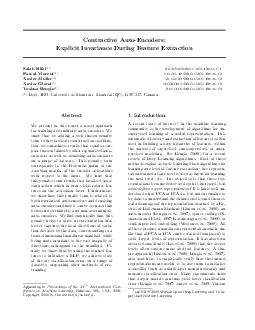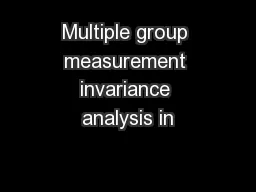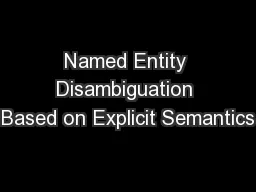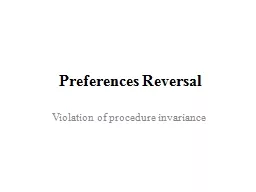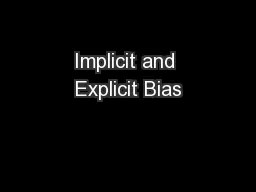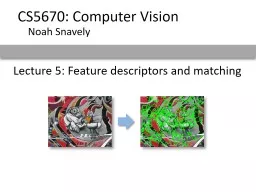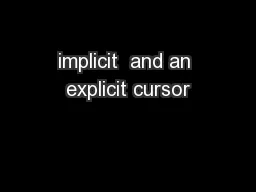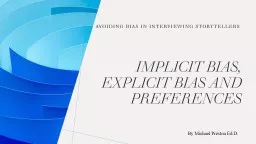PDF-Contractive AutoEncoders Explicit Invariance During Feature Extraction Salah Rifai rifaisaliro
Author : faustina-dinatale | Published Date : 2014-12-17
umontrealca Pascal Vincent 1 vincentpiroumontrealca Xavier Muller 1 mullerxiroumontrealca Xavier Glorot 1 glorotxairoumontrealca Yoshua Bengio 1 bengioyiroumontrealca
Presentation Embed Code
Download Presentation
Download Presentation The PPT/PDF document "Contractive AutoEncoders Explicit Invari..." is the property of its rightful owner. Permission is granted to download and print the materials on this website for personal, non-commercial use only, and to display it on your personal computer provided you do not modify the materials and that you retain all copyright notices contained in the materials. By downloading content from our website, you accept the terms of this agreement.
Contractive AutoEncoders Explicit Invariance During Feature Extraction Salah Rifai rifaisaliro: Transcript
Download Rules Of Document
"Contractive AutoEncoders Explicit Invariance During Feature Extraction Salah Rifai rifaisaliro"The content belongs to its owner. You may download and print it for personal use, without modification, and keep all copyright notices. By downloading, you agree to these terms.
Related Documents

